
How to Use USB Female: Examples, Pinouts, and Specs
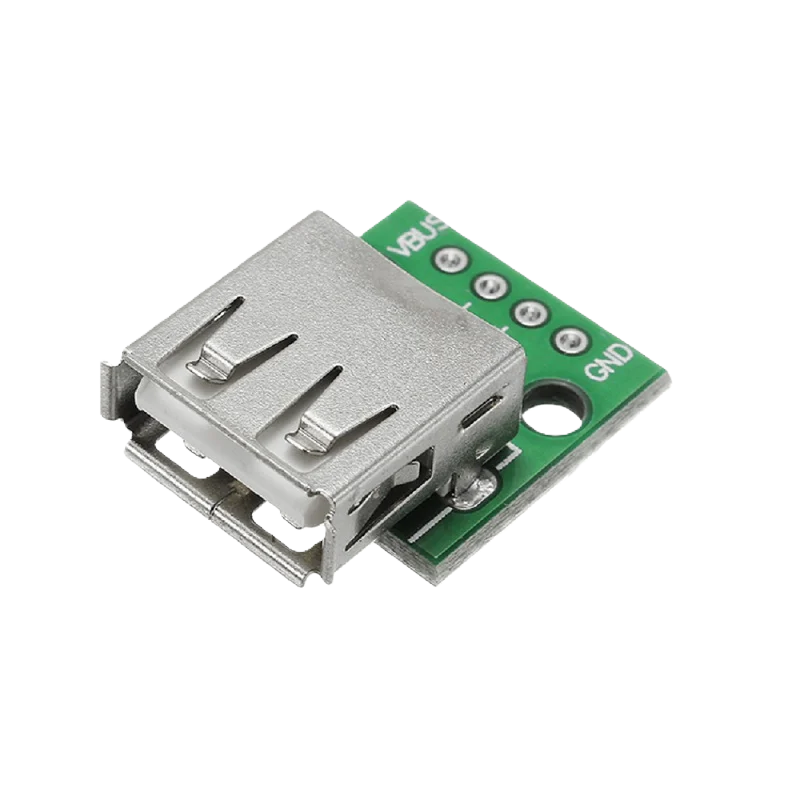
 Design with USB Female in Cirkit Designer
Design with USB Female in Cirkit DesignerIntroduction
A USB (Universal Serial Bus) female connector is a standard interface used in a wide range of electronic devices. It serves as a receptacle for a USB male connector, facilitating both power supply and data transfer between devices. Common applications include connecting peripherals such as keyboards, mice, printers, and external storage devices to computers, as well as charging and data synchronization for mobile devices.
Explore Projects Built with USB Female
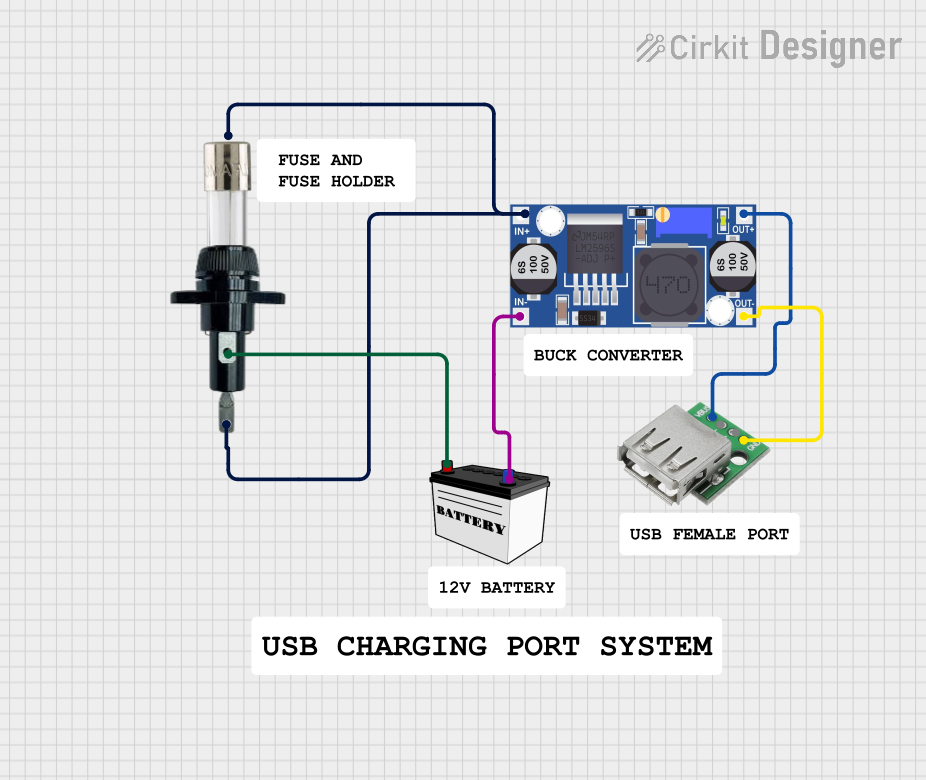
 Open Project in Cirkit Designer
Open Project in Cirkit Designer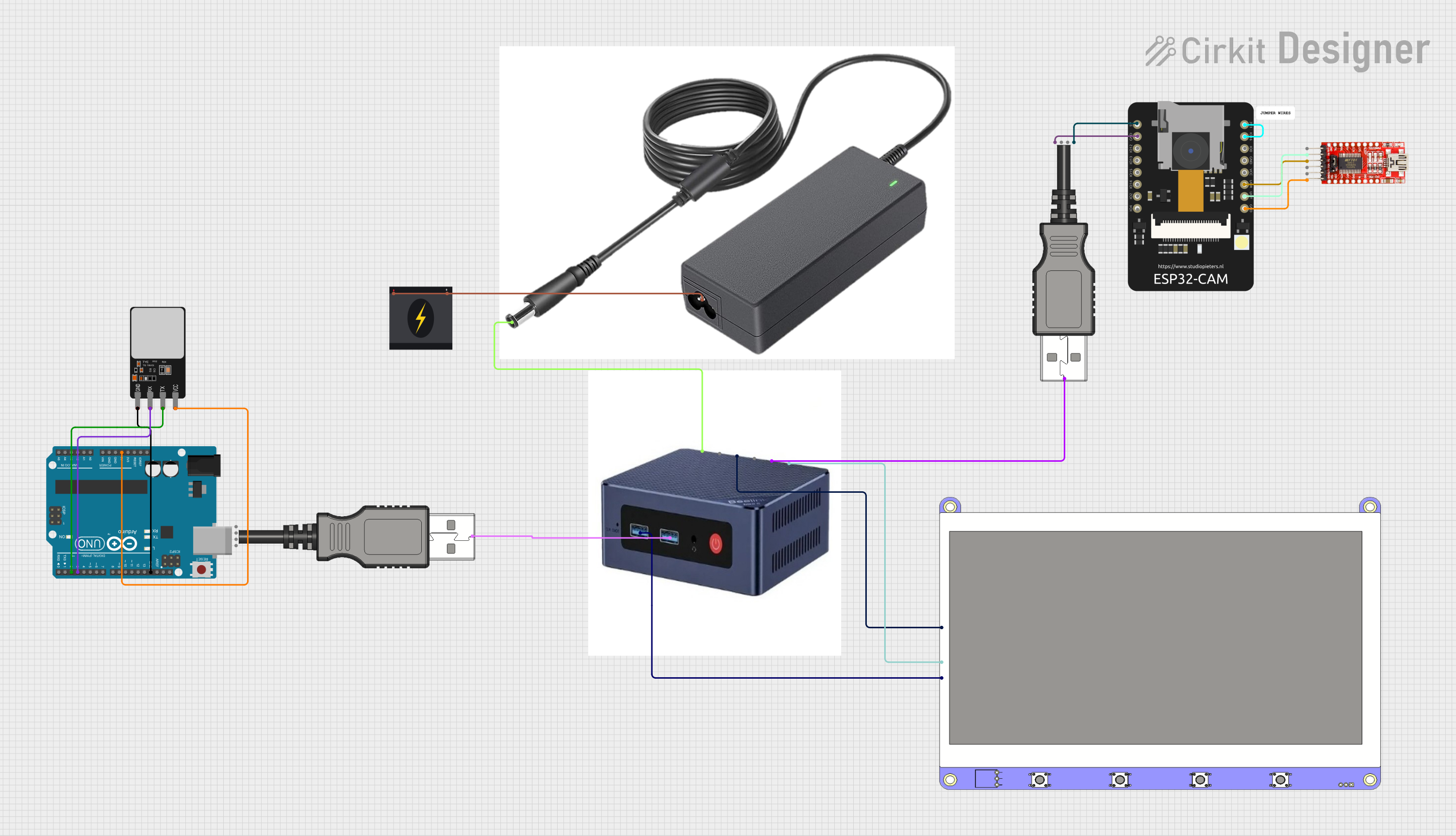
 Open Project in Cirkit Designer
Open Project in Cirkit Designer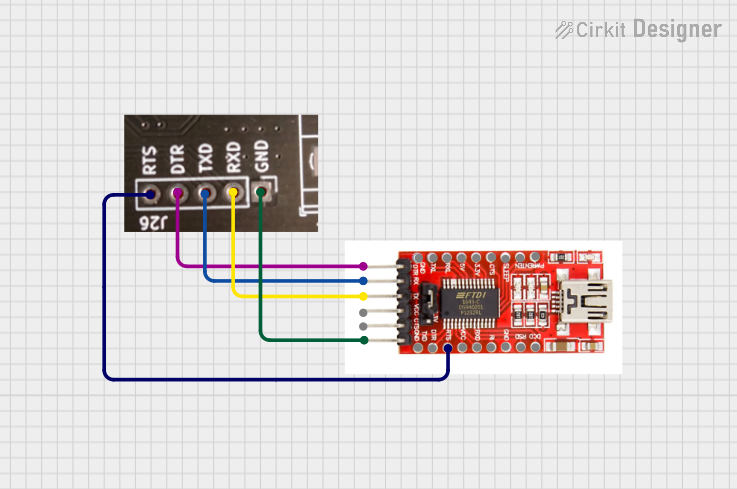
 Open Project in Cirkit Designer
Open Project in Cirkit Designer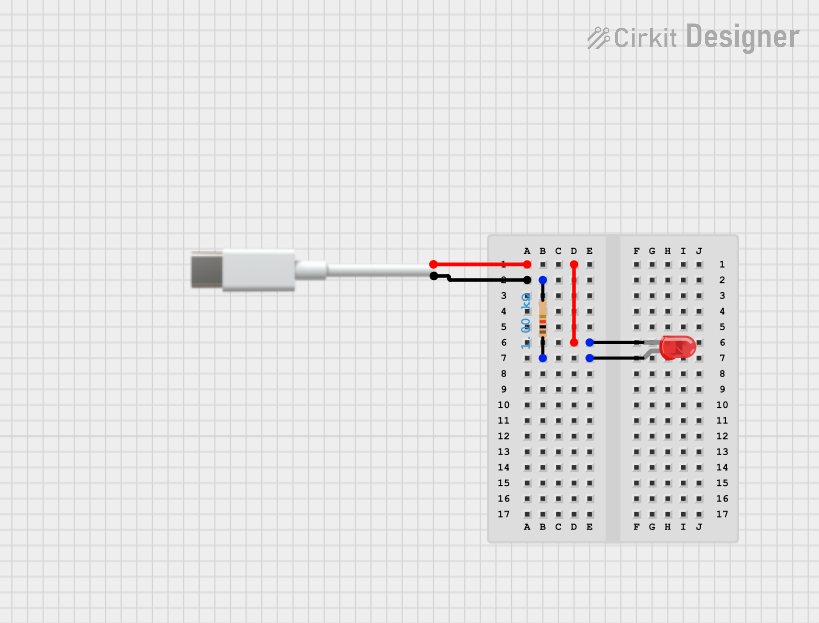
 Open Project in Cirkit Designer
Open Project in Cirkit DesignerExplore Projects Built with USB Female

 Open Project in Cirkit Designer
Open Project in Cirkit Designer
 Open Project in Cirkit Designer
Open Project in Cirkit Designer
 Open Project in Cirkit Designer
Open Project in Cirkit Designer
 Open Project in Cirkit Designer
Open Project in Cirkit DesignerTechnical Specifications
General Characteristics
- Type: USB Female Connector
- Versions: USB 1.1, USB 2.0, USB 3.0, USB 3.1, USB-C, etc.
- Data Transfer Rate: Varies by USB version (e.g., up to 480 Mbps for USB 2.0, up to 10 Gbps for USB 3.1)
- Power Supply: Up to 5V and 1.8A for standard USB, higher for USB-C with Power Delivery
Pin Configuration and Descriptions
The following table outlines the pin configuration for a standard USB 2.0 female connector:
| Pin Number | Signal Name | Description |
|---|---|---|
| 1 | VBUS | +5V Power |
| 2 | D- | Data - |
| 3 | D+ | Data + |
| 4 | GND | Ground |
For USB 3.0 and above, additional pins are present to support increased data transfer rates.
Usage Instructions
Integration into a Circuit
- Power Connections: Connect the VBUS pin to a +5V power source and the GND pin to the ground of your circuit.
- Data Connections: Connect the D- and D+ pins to the corresponding data lines of your host device or controller.
Best Practices
- Ensure that the USB female connector is properly mounted on the PCB with a stable mechanical connection to withstand repeated insertions and removals.
- Use proper ESD protection when handling the USB connector to prevent damage to sensitive components.
- For USB 3.0 and above, maintain impedance control for the data lines to ensure signal integrity.
Troubleshooting and FAQs
Common Issues
- Device Not Recognized: Check the connections to ensure that the data and power lines are correctly and securely connected.
- Intermittent Connection: Inspect the USB female connector for any physical damage or debris that may hinder a stable connection.
FAQs
Q: Can I use a USB 2.0 female connector with a USB 3.0 device? A: Yes, but the data transfer rate will be limited to USB 2.0 speeds.
Q: How can I identify the version of a USB female connector? A: The version is often indicated by the color of the plastic inside the connector (e.g., white for USB 1.1, black for USB 2.0, blue for USB 3.0) and by the number of pins.
Q: What is the maximum length for a USB cable? A: For USB 2.0, the maximum length is 5 meters. For USB 3.0, it is 3 meters. Beyond these lengths, signal integrity may be compromised.
Example Code for Arduino UNO
The following example demonstrates how to power an Arduino UNO through a USB female connector:
// No specific code is required for powering the Arduino through USB.
// Simply connect the USB cable to the Arduino's USB female port.
void setup() {
// Initialize serial communication at 9600 bits per second:
Serial.begin(9600);
}
void loop() {
// Send "Hello, World!" over the serial port every second:
Serial.println("Hello, World!");
delay(1000); // Wait for 1000 milliseconds (1 second)
}
Note: The above code is for serial communication demonstration purposes only and does not directly interact with the USB female connector's pins.
For more advanced USB interactions, such as acting as a USB host or implementing custom USB protocols, additional hardware (like a USB host shield) and libraries (such as the USB Host Library for Arduino) would be required.